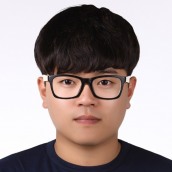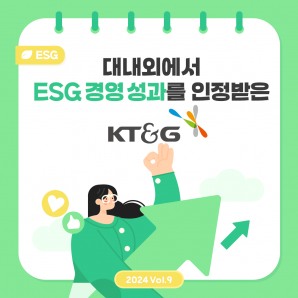
Samsung Electronics' QLC-based 128TB enterprise SSD. / Photo = Samsung Electronics
According to Samsung Electronics on the 26th, it will release 128TB eSSD based on Quadruple Level Cell (QLC), which boasts the largest existing capacity and data processing speed in November. This product, which Samsung Electronics unveiled at the Flash Memory Summit 2024 on the 6th, has specifications such as a continuous read speed of 7.5GB/s and a continuous write speed of up to 3GB/s.
SSD is a semiconductor that stores large amounts of data by mounting multiple NAND flashes at once. In the past, it was widely used mainly for home use such as computers, but the demand for eSSD for large-scale data storage and processing is increasing due to the recent expansion of AI data center business of big tech companies.
According to market research firm TrendForce, eSSD orders from major big tech companies such as Google, Amazon, and Microsoft increased by about 80% in the third quarter of this year compared to the fourth quarter of last year.
“The advancement of AI technology requires the growth of memory semiconductors,” said Jim Elliott, Executive Vice President, DS (Semiconductor) Division, Americas, Samsung Electronics, at the event. ”Samsung Electronics will continue to lead the way with low-power, high-performance products and production capacity based on our R&D and technology leadership.”
In fact, Samsung's QLC 128TB eSSD launch is relatively early given that its largest competitor, SK Hynix, is planning to launch the same specification next year. This is likely a move to get a head start on the market as competitors are expected to catch up, especially in the nand market, where Samsung is losing ground to HBM and other AI-focused D-RAMs.
Samsung Electronics leads the global SSD market with about 47% of the market share. SK Hynix, together with its SSD subsidiary Solidame, is in second place with a combined share of about 34%, and Japan's Kioxia is in third place with about 12%.
Although it is still at a relaxed level in market share, we cannot rest assured that both SK Hynix and Kioxia are chasing after each other by expanding their product lineups.
SK Hynix plans to expand the volume of wafers (semiconductor disks) centered on the M15 production line in Cheongju, and expand the average monthly production of wafers by about 10 percent from this year's early next year. From early next year, Solidigm will also raise its production volume by more than 5 percent from this year's.
"We are gradually increasing production this year, which was reduced due to NAND production cuts last year," said Kim Seok, head of NAND marketing at SK Hynix, in a second quarter earnings conference call. "We are expanding to focus on some application products that are increasing in demand, and in particular, sales of eSSD products are expected to account for nearly half of total NAND sales."
Japan's Kioxia, which will be listed in October, will strengthen its product competitiveness based on investment. With this listing, Kioxia plans to expand its R&D and facility investments to catch up with Samsung Electronics and SK Hynix. In particular, Kioxia, which has been focusing on home SSDs, is known to be trying to strengthen its product competitiveness to eSSD.
It is known that Kioxia has recently switched to 100% utilization rate at its Yokaiichi plant in Mie Prefecture and Kitakami plant in Iwate Prefecture. In addition, it is also preparing investments to convert its production line, which is currently focused on 6th-generation old products, into 8th and 9th-generation high-tech products.
Kim JaeHun (rlqm93@fntimes.com)




























![[DQN] "지자체 금고 잡아라"…출연금 신한 1위·금고 규모 농협 압도적](https://cfnimage.commutil.kr/phpwas/restmb_setimgmake.php?pp=006&w=69&h=45&m=5&simg=2024112102061902156f09e13944d391241172.jpg&nmt=18)
![[DQN] ‘잠잠할 날 없는 금융사고?’ 3년간 6천억대...BNK금융, 사고금액 최대](https://cfnimage.commutil.kr/phpwas/restmb_setimgmake.php?pp=006&w=69&h=45&m=5&simg=2024112021030009519237391cf861151384944.jpg&nmt=18)

![[DCM] KT, 2000억 회사채 발행... 장기 자금조달로 재무 안정성 확보](https://cfnimage.commutil.kr/phpwas/restmb_setimgmake.php?pp=006&w=69&h=45&m=5&simg=2024112113555900183141825007d12411124362.jpg&nmt=18)





![가상자산 과세 여-야 대립각…'유예 VS 시행' 줄다리기 [22대 국회]](https://cfnimage.commutil.kr/phpwas/restmb_setimgmake.php?pp=006&w=69&h=45&m=5&simg=2021111120211305168179ad43907611057578.jpg&nmt=18)














![[카드뉴스] 국립생태원과 함께 환경보호 활동 강화하는 KT&G](https://cfnimage.commutil.kr/phpwas/restmb_setimgmake.php?pp=006&w=298&h=298&m=1&simg=202403221529138957c1c16452b0175114235199_0.png&nmt=18)
![[카드뉴스] 신생아 특례 대출 조건, 한도, 금리, 신청방법 등 총정리...연 1%대, 최대 5억](https://cfnimage.commutil.kr/phpwas/restmb_setimgmake.php?pp=006&w=298&h=298&m=1&simg=20240131105228940de68fcbb35175114235199_0.jpg&nmt=18)
![[카드뉴스] 어닝시즌은 ‘실적발표기간’으로](https://cfnimage.commutil.kr/phpwas/restmb_setimgmake.php?pp=006&w=298&h=298&m=1&simg=202311301105084674de68fcbb35175114235199_0.png&nmt=18)
![[신간] 사모펀드 투자와 경영의 비밀](https://cfnimage.commutil.kr/phpwas/restmb_setimgmake.php?pp=006&w=81&h=123&m=5&simg=2024102809331308730f8caa4a5ce175114235199.jpg&nmt=18)
![[신간]퍼스널브랜딩, 문학에서 길을 찾다](https://cfnimage.commutil.kr/phpwas/restmb_setimgmake.php?pp=006&w=81&h=123&m=5&simg=2024102214123606876f8caa4a5ce175114235199.jpg&nmt=18)
![[서평] 추세 매매의 대가들...추세추종 투자전략의 대가 14인 인터뷰](https://cfnimage.commutil.kr/phpwas/restmb_setimgmake.php?pp=006&w=81&h=123&m=5&simg=2023102410444004986c1c16452b0175114235199.jpg&nmt=18)

![[신간] 김국주 전 제주은행장, ‘나는 시간을 그린다 1·2’ 에세이 출간](https://cfnimage.commutil.kr/phpwas/restmb_setimgmake.php?pp=006&w=81&h=123&m=5&simg=2024111517430908074c1c16452b012411124362.jpg&nmt=18)








